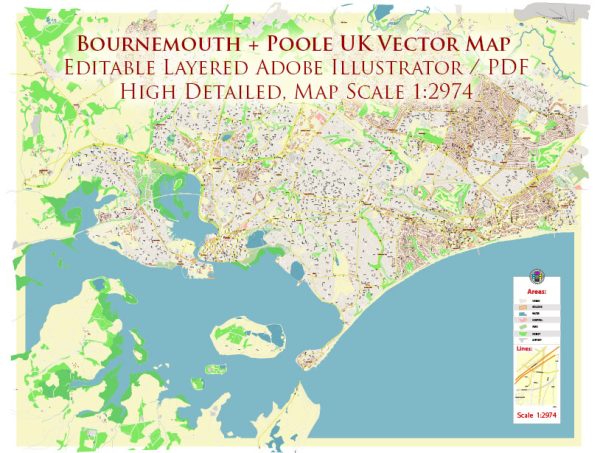The Poole and Bournemouth area in the United Kingdom has a rich history of urban development, shaped by a combination of geographical, economic, and social factors. While each town has its unique history, they are located in close proximity to each other on the south coast of England, making them integral parts of the conurbation known as South East Dorset.
Poole:
- Medieval Origins: Poole has a long history dating back to the Iron Age, but it gained prominence in the medieval period as a bustling port. Its natural harbor made it an essential hub for trade, fishing, and shipbuilding.
- Maritime Trade: In the 18th century, Poole became a significant player in the transatlantic trade, particularly with Newfoundland and North America. This period saw the expansion of the town’s waterfront and the development of warehouses and quays.
- Industrial Revolution: The Industrial Revolution brought further changes to Poole. The town continued to thrive as a port, and industries such as pottery and brickmaking emerged. The railway arrived in the 19th century, connecting Poole to other parts of the country and facilitating both trade and tourism.
- 20th Century: Poole’s role as a port continued into the 20th century, but there was also a shift towards tourism and leisure. The town saw the development of seaside resorts and amenities, contributing to its modern identity as a tourist destination.
Bournemouth:
- Founding and Victorian Era: Bournemouth’s history as a settlement began in the early 19th century when it was a small seaside village. Its growth accelerated in the Victorian era when it became a popular health resort. The arrival of the railway in 1870 further fueled its expansion.
- Urban Planning: Bournemouth is known for its well-planned urban layout. In the late 19th and early 20th centuries, the town’s architects and planners created wide tree-lined avenues, parks, and gardens, contributing to its reputation as a desirable residential area.
- Interwar Period: The interwar period saw further development, and Bournemouth became a popular destination for retirees. The town continued to grow in terms of population and infrastructure.
- Post-War Period: Like many British towns, Bournemouth underwent reconstruction and development after World War II. The post-war period saw increased suburbanization and the construction of new housing and amenities.
- Contemporary Era: In recent decades, both Poole and Bournemouth have experienced ongoing urban development, with a focus on modernization, infrastructure improvement, and the promotion of tourism. The two towns are now part of a larger urban area that includes Christchurch, known for its picturesque setting and historical significance.
Overall, the urban development of the Poole and Bournemouth area reflects a combination of maritime history, industrialization, tourism, and thoughtful urban planning, creating a dynamic and diverse region on the south coast of England.


 Author: Kirill Shrayber, Ph.D.
Author: Kirill Shrayber, Ph.D.